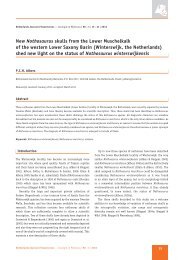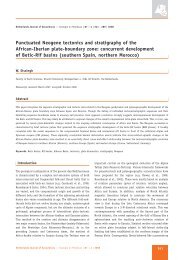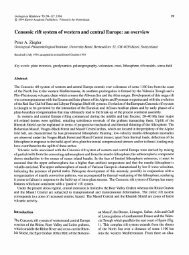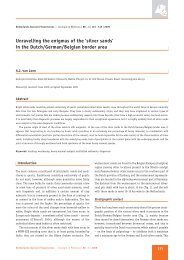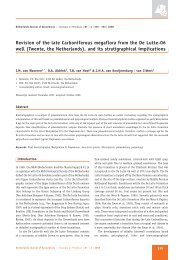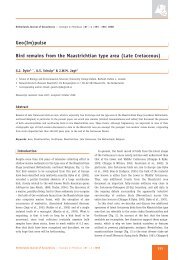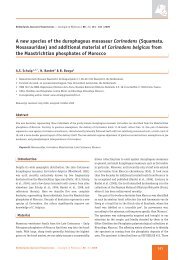Diagnostic sedimentary structures of the fluvial-tidal transition zone ...
Diagnostic sedimentary structures of the fluvial-tidal transition zone ...
Diagnostic sedimentary structures of the fluvial-tidal transition zone ...
Create successful ePaper yourself
Turn your PDF publications into a flip-book with our unique Google optimized e-Paper software.
Fig. 12. Two successive<br />
cycles <strong>of</strong> flood directed<br />
cross-stratification followed<br />
by downriver <strong>fluvial</strong> X<br />
bedding. Note <strong>the</strong> presence<br />
<strong>of</strong> clay drapes in <strong>the</strong> flooddirected<br />
sets (formed by<br />
migration <strong>of</strong> ripples and<br />
dunes to <strong>the</strong> left). The sets<br />
generated by <strong>the</strong> upriver<br />
flow have a fine sand<br />
texture, whereas <strong>the</strong> <strong>fluvial</strong><br />
X-beds consist <strong>of</strong> coarse<br />
sand. This demonstrates<br />
<strong>the</strong> much stronger downriver<br />
flow (Hambach exposure).<br />
298<br />
Fig. 11. Fluvial rhythmites<br />
in a channel fill<br />
deposit (oxbow lake).<br />
Light bands are made <strong>of</strong><br />
x-laminated sands. The<br />
darker bands are muddier,<br />
with incidental foot<br />
imprints and escape<br />
<strong>structures</strong> <strong>of</strong> mussels. The<br />
sand bands represent<br />
incidental river floods.<br />
They alternate with low<br />
<strong>fluvial</strong> discharge periods<br />
(Hambach exposure).<br />
Ne<strong>the</strong>rlands Journal <strong>of</strong> Geosciences — Geologie en Mijnbouw | 86 – 3 | 2007



